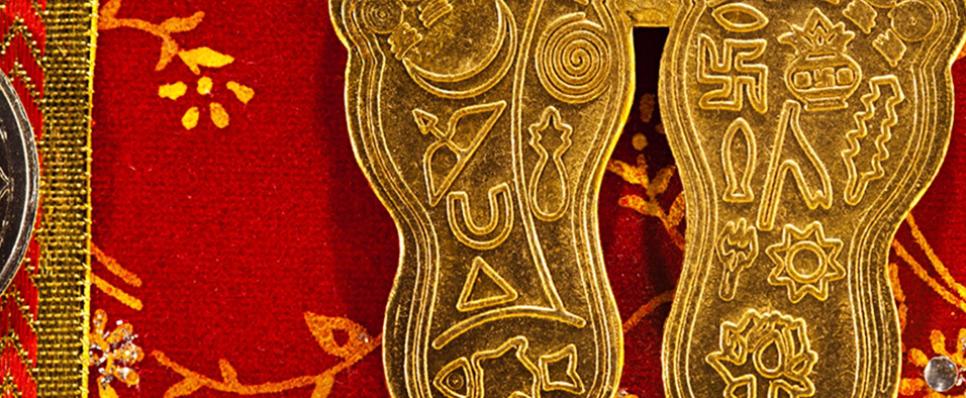Published: 27 Sep 2017
The gold sandals that ruled as king

Ancient Hindu and Buddhist traditions of venerating footwear and footprints come down to an oft-repeated myth. This myth has at its centre a brother’s loyalty, a son’s obedience and a pair of gold sandals belonging to a beloved god-king.
The way the Ramayana tells it, Lord Ram’s brother Bharat returned to Ayodhya to find it in considerable disarray. His father, the King, was sick and dying and had just exiled his beloved son Ram, heir to the throne of Ayodhya, to the forest, in accordance with a promise asked of him. A distressed Bharat made his way into the forest to try and persuade Ram to come back and govern as sovereign. Ram, out of devotion to his father, would not be persuaded. Finally, Bharat begged for Ram’s gold encrusted padukas (the earliest of early ancestors to modern day footwear), and placing them on his head he returned home. He set the padukas on the throne and declared that they stood as proxy for the rightful king. Bharat himself assumed no official power and soon, as the story goes, Ram himself returned to the glittering city and assumed the throne.
The various meanings and interpretations we draw from this story find resonance in several Hindu practices. Take for instance, the tracing of the Goddess Lakshmi’s footprints outside the home at Diwali or the annual Pandharpur pilgrimage in Maharashtra in honour of the poet-saints Dyaneshwar and Tukaram. The more everyday practice of touching the feet of a teacher or a priest happens in the same stretch of land where specially made shoes are made as offerings to the deity at the Tirupati Temple.
The word Paduka has dual meaning. It was the word for a toe-knob sandal worn in pre-Vedic India and is also used to mean a footprint. Jutta Jain-Neubauer, the author of the beautifully illustrated book Feet and Footwear in ancient India traces the evolution of the paduka from the crude structure designed with a narrow platform to the more sophisticated designs used as inspiration for later shoes and mojris. While common men and women wore shoes made of out of wood or iron, Kings often had their paduka inlaid with marble or gold, decorated with elaborate designs or studded with precious stones. The story of Ram’s golden padukas is just a drop in the ocean of myths and folklore that binds a specific Hindu cultural and spiritual fabric.











